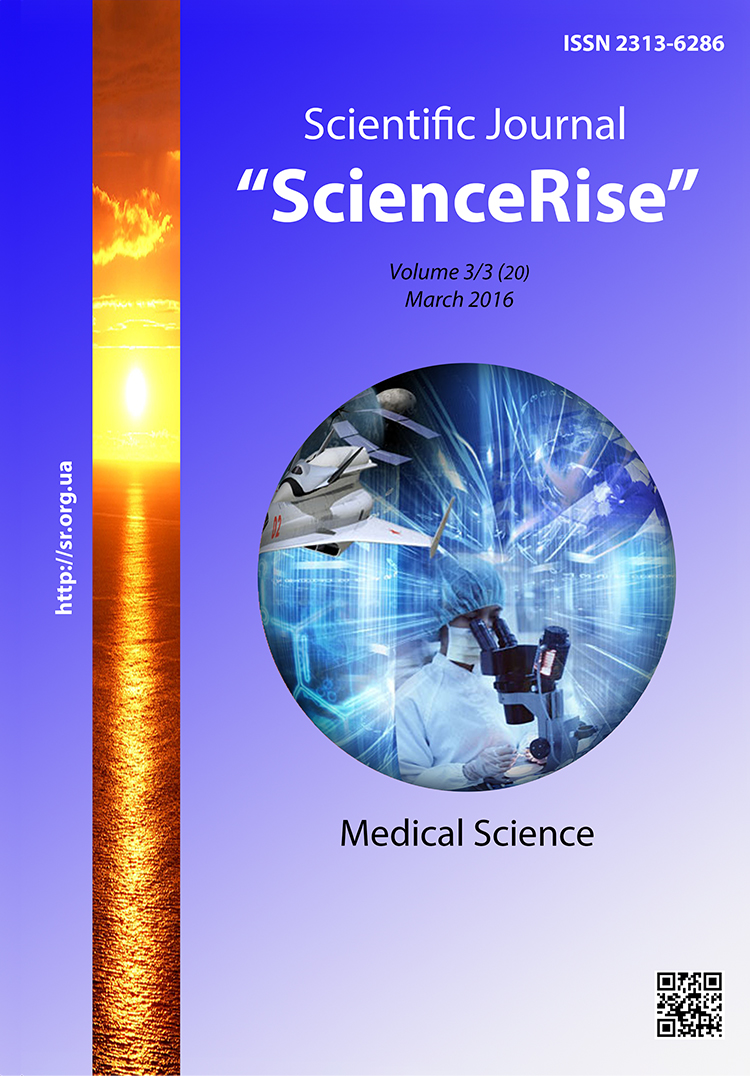Динаміка морфологічного стану слизової оболонки шлунка в ранньому постерадикаційному періоді у дітей
DOI:
https://doi.org/10.15587/2313-8416.2016.64430Słowa kluczowe:
діти, гастродуоденальна зона, ерадикаційна терапія, Helicobacter pylori, Lactobacillus reuteriAbstrakt
Досліджувався вплив пробіотика, що містить Lactobacillus reuteri DSM 17938, на слизову оболонку шлунка дітей з деструктивними формами патології гастродуоденальної зони після ерадикаційної терапії. Доведено здатність лактобактерій зменшувати запальні зміни слизової оболонки, які утримуються і після успішної елімінації Helicobacter pylori. Обгрунтовано доцільність використання препаратів, що містять Lactobacillus reuteri в лікуванні дітей в ранньому постерадикаційному періоді
Bibliografia
Lyvzan, M. A., Kononov, A. V., Mozgovoj, S. Y. (2007). Techeniye khronicheskogo gastrita, assotsiirovannogo s Helicobacter pylori v posteradikatsionnom periode [The course of chronic gastritis associated with Helicobacter pylori in posteradication period]. Experimental and Clinical Pharmacology, 5, 116–123.
Hnateyko, O. Z., Lychkovska, O. L., Kulachkovska, I. Yu., Terpylyak, O. I. (2011). Rol` genetychnykh faktoriv u rozvytku skhylnosti do gastroduodenalnoyi patologiyi u ditej [The role of genetic factors in the development of predisposition to gastroduodenal pathology in children]. Pediatrics, Obstetrics and Ginecology, 6, 10–15.
Amieva, M. R., El–Omar, E. M. (2008). Host-Bacterial Interactions in Helicobacter pylori Infection. Gastroenterology, 134 (1), 306–323. doi: 10.1053/j.gastro.2007.11.009
Blaser, M. J. (1998). Helicobacters are indigenous to the human stomach: duodenal ulceration is due to changes in gastric microecology in the modern era. Gut, 43 (5), 721–727. doi: 10.1136/gut.43.5.721
Blaser, M. J., Atherton, J. C. (2004). Helicobacter pylori persistence: biology and disease. Journal of Clinical Investigation, 113 (3), 321–333. doi: 10.1172/jci20925
IARC monographs on the evaluation of carcinogenic risks to humans. Schistosomes, liver flukes and Helicobacter pylori (1994). Lyon: IARC, 61, 177–240.
Naito, S., Koga, H., Yamaguchi, A., Fujimoto, N., Hasui, Y., Kuramoto, H. et. al (2008). Prevention of Recurrence With Epirubicin and Lactobacillus Casei After Transurethral Resection of Bladder Cancer. The Journal of Urology, 179 (2), 485–490. doi: 10.1016/j.juro.2007.09.031
Sabbi, T. (2011). Short review about Helicobacter pylori infection in pediatric age: epidemiological and clinical findings, diagnosis, therapy and role of probiotics. Pediatr. Med. Chir., 33 (5-6), 221–226.
Akcam, M., Koca, T., Salman, H., Karahan, N. (2015). The effects of probiotics on treatment of Helicobacter pylori eradication in children. Saudi Medical Journal, 36 (4), 286–290. doi: 10.15537/smj.2015.3.10124
Qadri, Q., Rasool, R., Afroze, D., Naqash, S., Gulzar, G. M., Yousuf, A. et. al (2013). Study of TLR4 and IL-8 Gene Polymorphisms in H.pylori -Induced Inflammation in Gastric Cancer in an Ethnic Kashmiri Population. Immunological Investigations, 43 (4), 324–336. doi: 10.3109/08820139.2013.854378
Kim, S. S., Sung, Y. J., Park, M. K., Lim, C. H., Yang, H. J., Kim, T. H. (2008). The Change of Cyclooxygenase-2 and Inducible Nitric Oxide Synthase in the Gastric Mucosa One Year after Eradication of Helicobacter pylori. J. Gastroenterol., 52 (5), 286–292.
Moayyedi, P., Ford, A. C., Talley, N. J., Cremonini, F., Foxx-Orenstein, A. E., Brandt, L. J., Quigley, E. M. M. (2008). The efficacy of probiotics in the treatment of irritable bowel syndrome: a systematic review. Gut, 59 (3), 325–332. doi: 10.1136/gut.2008.167270
Azuma, T., Ito, S., Sato, F., Yamazaki, Y., Miyaji, H., Ito, Y. et. al (1998). The role of the HLA-DQA1 gene in resistance to atrophic gastritis and gastric adenocarcinoma induced by Helicobacter pylori infection. Cancer, 82 (6), 1013–1018. doi: 10.1002/(sici)1097-0142(19980315)82:6<1013::aid-cncr2>3.0.co;2-f
Falush, D. (2003). Traces of Human Migrations in Helicobacter pylori Populations. Science, 299 (5612), 1582–1585. doi: 10.1126/science.1080857
Yan, F. (2002). Probiotic Bacterium Prevents Cytokine-induced Apoptosis in Intestinal Epithelial Cells. Journal of Biological Chemistry, 277 (52), 50959–50965. doi: 10.1074/jbc.m207050200
Zhou, C. (2008). Lactobacilli inhibit interleukin-8 production induced by Helicobacter pylori lipopolysaccharide-activated Toll-like receptor 4. World Journal of Gastroenterology, 14 (32), 5090. doi: 10.3748/wjg.14.5090
##submission.downloads##
Opublikowane
Numer
Dział
Licencja
Copyright (c) 2016 Наталія Романівна Кеч, Олена Львівна Личковська, Олег-Роман Зиновійович Гнатейко, Ірина Юріївна Кулачковська, Вікторія Дмитрівна Семен, Людмила Ярославівна Чекан

Utwór dostępny jest na licencji Creative Commons Uznanie autorstwa 4.0 Międzynarodowe.
Our journal abides by the Creative Commons CC BY copyright rights and permissions for open access journals.
Authors, who are published in this journal, agree to the following conditions:
1. The authors reserve the right to authorship of the work and pass the first publication right of this work to the journal under the terms of a Creative Commons CC BY, which allows others to freely distribute the published research with the obligatory reference to the authors of the original work and the first publication of the work in this journal.
2. The authors have the right to conclude separate supplement agreements that relate to non-exclusive work distribution in the form in which it has been published by the journal (for example, to upload the work to the online storage of the journal or publish it as part of a monograph), provided that the reference to the first publication of the work in this journal is included.

